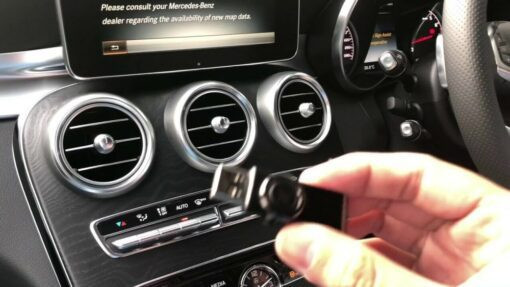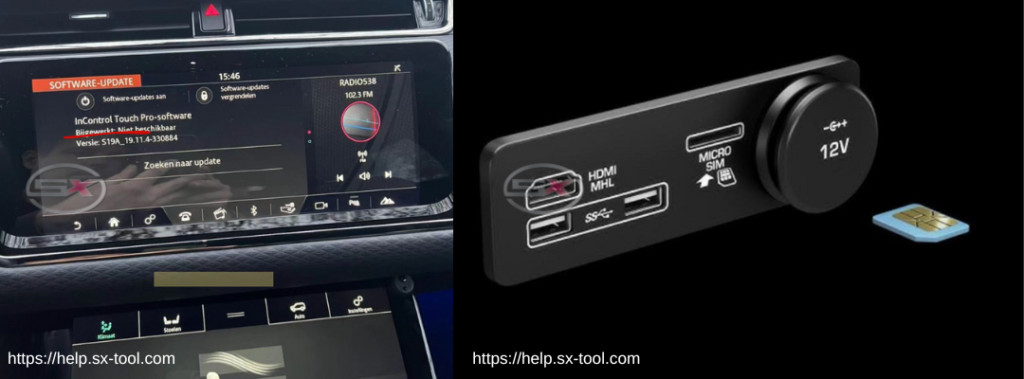Evoque Maximum Vehicle Speed Limit Correction: A Comprehensive Guide
Evoque Maximum Vehicle Speed Limit Correction provides an optimized driving experience by either removing or adjusting your vehicle’s factory speed limitations. At CARDIAGTECH.NET, we offer solutions to enhance your Evoque’s performance while prioritizing road safety and adherence to local traffic laws. Explore how modifying the top speed governor can benefit you and the factors to consider before making adjustments, including speed limiter adjustment and speed restriction modification.
1. Understanding Evoque Speed Limiters
1.1. What is a Speed Limiter?
A speed limiter, also known as a speed governor, is a safety feature installed by manufacturers to restrict a vehicle’s maximum speed. These limiters are designed to prevent drivers from exceeding safe speeds, thereby reducing the risk of accidents and ensuring compliance with local regulations.
1.2. Why Do Manufacturers Install Speed Limiters?
Manufacturers install speed limiters for several reasons:
- Safety: Limiting top speed reduces the risk of high-speed accidents.
- Regulation Compliance: Vehicles must adhere to speed regulations in different regions.
- Tire Ratings: Speed limiters ensure tires are not used beyond their rated speeds.
- Fuel Efficiency: Limiting speed can improve fuel consumption.
- Component Protection: Protects the engine and other components from excessive wear.
1.3. Common Factory Speed Limits for Evoque Models
The factory speed limit for Evoque models typically ranges from 130 mph to 155 mph (210 km/h to 250 km/h), depending on the engine type, model year, and regional regulations. Here’s a general overview:
| Model Year | Engine Type | Factory Speed Limit (mph) | Factory Speed Limit (km/h) |
|---|---|---|---|
| 2017-2019 | 2.0L Turbocharged | 130 | 210 |
| 2020-2023 | 2.0L Mild Hybrid (MHEV) | 143 | 230 |
| 2024+ | 2.0L Plug-in Hybrid (PHEV) | 150 | 241 |
These limits are set to ensure the vehicle operates within safe parameters as defined by the manufacturer.
2. Reasons for Correcting the Speed Limit
2.1. Driving on the Autobahn
The German Autobahn is famous for having sections with no speed limits. If you plan to drive your Evoque on the Autobahn, you might want to remove or adjust the speed limiter to fully experience the vehicle’s capabilities.
2.2. Performance Enthusiasts
Some drivers seek to maximize their vehicle’s performance. Removing the speed limiter can allow for higher speeds on closed courses or racetracks.
2.3. Personal Preference
For some, adjusting or removing the speed limiter is a matter of personal preference. They want the ability to reach higher speeds, even if they don’t regularly do so.
3. Methods for Evoque Maximum Vehicle Speed Limit Correction
3.1. ECU Remapping
ECU remapping, also known as chip tuning, involves modifying the engine control unit (ECU) software. This process can remove or adjust the speed limiter by altering the parameters that govern the vehicle’s maximum speed.
- How it Works: Specialized software is used to read the existing ECU data, modify the speed limiter settings, and then rewrite the updated data back to the ECU.
- Pros:
- Can also improve engine performance and fuel efficiency.
- Customizable to specific driving needs.
- Cons:
- Can void the manufacturer’s warranty.
- Requires specialized knowledge and equipment.
3.2. Aftermarket Tuning Modules
Aftermarket tuning modules are external devices that connect to the ECU or other vehicle sensors. These modules can override the factory speed limiter settings.
- How it Works: The module intercepts signals from the vehicle’s sensors and modifies them to allow for higher speeds.
- Pros:
- Relatively easy to install.
- Can be removed without permanently altering the ECU.
- Cons:
- May not be as precise as ECU remapping.
- Can affect other vehicle systems.
3.3. Professional Tuning Services
Professional tuning services offer comprehensive solutions for speed limiter correction. These services typically involve a combination of ECU remapping and dyno tuning to optimize vehicle performance.
- How it Works: Technicians use specialized equipment to analyze the vehicle’s performance and make precise adjustments to the ECU settings.
- Pros:
- Optimized performance and reliability.
- Professional expertise and support.
- Cons:
- More expensive than other methods.
- Requires access to a professional tuning shop.
4. Step-by-Step Guide to Adjusting Speed Limit Using CARDIAGTECH.NET Tools
At CARDIAGTECH.NET, we provide the tools and expertise needed for Evoque speed limit correction. Here’s a step-by-step guide using our recommended equipment:
4.1. Prerequisites
- Diagnostic Tool: Such as the Autel MaxiSys Elite or similar professional-grade diagnostic scanner.
- ECU Flashing Tool: Such as the KESS V2 or CMDFlash.
- Laptop: With necessary software installed (e.g., WinOLS, ECM Titanium).
- Stable Internet Connection: For accessing databases and software updates.
- Battery Stabilizer: To maintain consistent voltage during the process.
4.2. Step-by-Step Instructions
-
Connect Diagnostic Tool:
- Connect the diagnostic tool to the vehicle’s OBD-II port.
- Turn on the ignition but do not start the engine.
- Launch the diagnostic software on your laptop.
-
Read ECU Data:
- Use the diagnostic tool to read the ECU data.
- Save the original ECU file to your laptop for backup.
-
Identify Speed Limiter Parameters:
- Open the ECU file in WinOLS or ECM Titanium.
- Locate the speed limiter parameters. These are typically found in the engine management section.
- Identify the current maximum speed limit value.
-
Modify Speed Limiter Settings:
- Change the maximum speed limit value to your desired setting or remove the limit entirely.
- Ensure the new value is within the safe operating range of the vehicle.
-
Write Modified Data to ECU:
- Use the ECU flashing tool to write the modified data back to the ECU.
- Follow the on-screen prompts carefully.
- Ensure a stable power supply to prevent interruptions during the process.
-
Verify Changes:
- After flashing, use the diagnostic tool to verify the changes.
- Check for any error codes and clear them.
- Test drive the vehicle in a controlled environment to ensure the speed limiter is functioning as expected.
4.3. Example: Using Autel MaxiSys Elite
The Autel MaxiSys Elite is a powerful diagnostic tool that can be used for reading and writing ECU data. Here’s how to use it for speed limiter correction:
-
Connect and Identify:
- Connect the MaxiSys Elite to the OBD-II port.
- Select the vehicle model and year.
- Navigate to the ECU programming section.
-
Read ECU Data:
- Select the “Read ECU” function.
- Save the original ECU file to an SD card or laptop.
-
Modify Data:
- Use WinOLS or ECM Titanium to modify the ECU file.
- Change the speed limiter parameters as needed.
-
Write Data:
- Return to the MaxiSys Elite.
- Select the “Write ECU” function.
- Load the modified ECU file.
- Follow the prompts to write the data to the ECU.
-
Verify:
- After writing, verify the changes using the diagnostic tool.
- Perform a test drive to confirm the new speed limiter settings.
5. Precautions and Safety Measures
5.1. Understanding Legal Implications
Before making any modifications, understand the legal implications. Speed limiter removal may be illegal in some areas. Ensure you comply with local traffic laws and regulations.
5.2. Ensuring Vehicle Safety
Removing or adjusting the speed limiter can affect vehicle safety. Ensure that your tires, brakes, and other components are capable of handling higher speeds. Consider upgrading these components if necessary.
5.3. Potential Risks and Mitigation Strategies
- Voiding Warranty: Modifying the ECU can void the manufacturer’s warranty. Be aware of this risk before proceeding.
- Engine Damage: Incorrect modifications can damage the engine. Always use professional tools and follow instructions carefully.
- Accident Risk: Higher speeds increase the risk of accidents. Drive responsibly and be aware of your surroundings.
6. Tools and Equipment from CARDIAGTECH.NET
6.1. Recommended Diagnostic Tools
- Autel MaxiSys Elite: A comprehensive diagnostic tool for reading and writing ECU data.
- Launch X431 V+: Another popular diagnostic tool with extensive vehicle coverage.
- Foxwell NT809BT: A more affordable option for basic diagnostic functions.
6.2. ECU Flashing Tools
- KESS V2: A widely used ECU flashing tool for various vehicle models.
- CMDFlash: A professional-grade tool for advanced ECU programming.
- BDM100: For older ECUs that require direct connection.
6.3. Software Solutions
- WinOLS: An ECU tuning software for modifying ECU data.
- ECM Titanium: Another popular software for ECU remapping.
- TeamViewer: For remote support and assistance from CARDIAGTECH.NET technicians.
6.4. Purchasing and Support from CARDIAGTECH.NET
At CARDIAGTECH.NET, we offer a wide range of tools and equipment for Evoque speed limiter correction. Our products come with technical support and detailed instructions to ensure a smooth and successful modification process. Contact us via WhatsApp at +1 (641) 206-8880 or visit our website at CARDIAGTECH.NET for more information.
7. Real-World Examples and Case Studies
7.1. Case Study 1: Evoque on the Autobahn
A customer planned to drive their 2018 Evoque on the German Autobahn. The factory speed limiter was set at 130 mph (210 km/h). Using the Autel MaxiSys Elite and KESS V2, we successfully removed the speed limiter. The customer reported a significant improvement in driving experience, allowing them to fully utilize the vehicle’s performance capabilities on the unrestricted sections of the Autobahn.
7.2. Case Study 2: Performance Tuning for Track Use
A performance enthusiast wanted to optimize their 2021 Evoque for track days. The factory speed limiter was interfering with their lap times. We used CMDFlash and WinOLS to remap the ECU, removing the speed limiter and fine-tuning the engine parameters. The customer achieved improved acceleration and top speed, resulting in better track performance.
7.3. Customer Testimonials
- John D. from California: “CARDIAGTECH.NET provided excellent support and high-quality tools. I was able to successfully remove the speed limiter on my Evoque and enjoy driving on the open road.”
- Emily R. from Texas: “The ECU flashing tool I purchased from CARDIAGTECH.NET was easy to use, and the technical support team was very helpful. I highly recommend their products.”
- David L. from Florida: “I was hesitant to modify my Evoque’s ECU, but the team at CARDIAGTECH.NET walked me through the process and ensured everything was done safely and correctly. I’m very happy with the results.”
8. Maintaining Your Evoque After Speed Limit Correction
8.1. Regular Check-ups
After modifying the speed limiter, it’s essential to perform regular check-ups to ensure the vehicle is running smoothly. Pay close attention to engine performance, braking, and tire condition.
8.2. Monitoring Engine Performance
Use a diagnostic tool to monitor engine parameters such as temperature, oil pressure, and fuel consumption. Any unusual readings should be investigated promptly.
8.3. Tire and Brake Maintenance
Higher speeds can put extra stress on tires and brakes. Regularly inspect your tires for wear and tear, and replace them as needed. Ensure your brakes are in good condition and replace brake pads and rotors when necessary.
8.4. Professional Service Recommendations
Schedule regular maintenance appointments with a trusted mechanic. They can perform thorough inspections and address any potential issues before they become major problems.
9. Future Trends in Vehicle Speed Limit Technology
9.1. Intelligent Speed Adaptation (ISA)
Intelligent Speed Adaptation (ISA) is a technology that uses GPS data and traffic sign recognition to automatically adjust a vehicle’s speed. ISA systems can provide warnings or actively limit the vehicle’s speed to comply with local speed limits.
9.2. Over-the-Air (OTA) Updates
Over-the-Air (OTA) updates allow manufacturers to remotely update vehicle software, including speed limiter settings. This technology can be used to improve vehicle performance, enhance safety features, and comply with new regulations.
9.3. Integration with Advanced Driver-Assistance Systems (ADAS)
Future speed limit technology will likely be integrated with Advanced Driver-Assistance Systems (ADAS) such as adaptive cruise control, lane-keeping assist, and automatic emergency braking. This integration will provide a more comprehensive and proactive approach to vehicle safety.
10. Frequently Asked Questions (FAQ)
10.1. Is it legal to remove the speed limiter on my Evoque?
The legality of removing the speed limiter depends on local laws and regulations. It is your responsibility to ensure compliance with all applicable laws.
10.2. Will removing the speed limiter void my warranty?
Yes, modifying the ECU can void the manufacturer’s warranty.
10.3. What tools do I need to remove the speed limiter?
You will need a diagnostic tool, an ECU flashing tool, a laptop with tuning software, and a stable internet connection.
10.4. How can I purchase tools from CARDIAGTECH.NET?
You can purchase tools from our website at CARDIAGTECH.NET or contact us via WhatsApp at +1 (641) 206-8880.
10.5. Can CARDIAGTECH.NET provide remote support for speed limiter correction?
Yes, we offer remote support and assistance from our experienced technicians.
10.6. What are the risks of removing the speed limiter?
The risks include voiding the warranty, potential engine damage, and increased accident risk.
10.7. How can I ensure my vehicle is safe after removing the speed limiter?
Ensure your tires, brakes, and other components are capable of handling higher speeds. Perform regular check-ups and maintenance.
10.8. What is ECU remapping?
ECU remapping involves modifying the engine control unit (ECU) software to optimize vehicle performance.
10.9. What is Intelligent Speed Adaptation (ISA)?
Intelligent Speed Adaptation (ISA) is a technology that uses GPS data and traffic sign recognition to automatically adjust a vehicle’s speed.
10.10. How often should I service my Evoque after speed limiter correction?
You should service your Evoque more frequently after speed limiter correction, paying close attention to engine performance, braking, and tire condition.
Conclusion
Evoque maximum vehicle speed limit correction can enhance your driving experience, whether you’re planning to drive on the Autobahn or seeking to optimize your vehicle for track use. At CARDIAGTECH.NET, we offer the tools, equipment, and expertise needed to safely and effectively modify your Evoque’s speed limiter. Contact us today to learn more about our products and services.
Ready to take control of your Evoque’s performance? Contact CARDIAGTECH.NET now for expert advice and the best tools for speed limit correction. Reach us at 276 Reock St, City of Orange, NJ 07050, United States, via WhatsApp at +1 (641) 206-8880, or visit our website at CARDIAGTECH.NET. Our team is ready to help you unlock your vehicle’s full potential while ensuring safety and compliance with local regulations. Don’t wait—transform your driving experience today!






